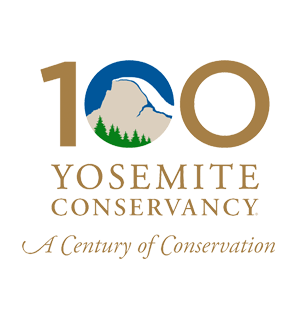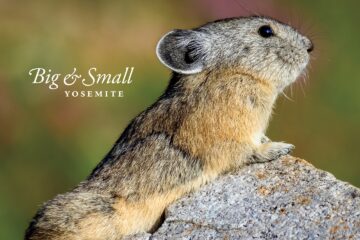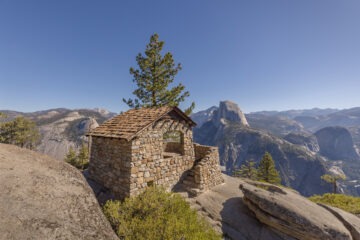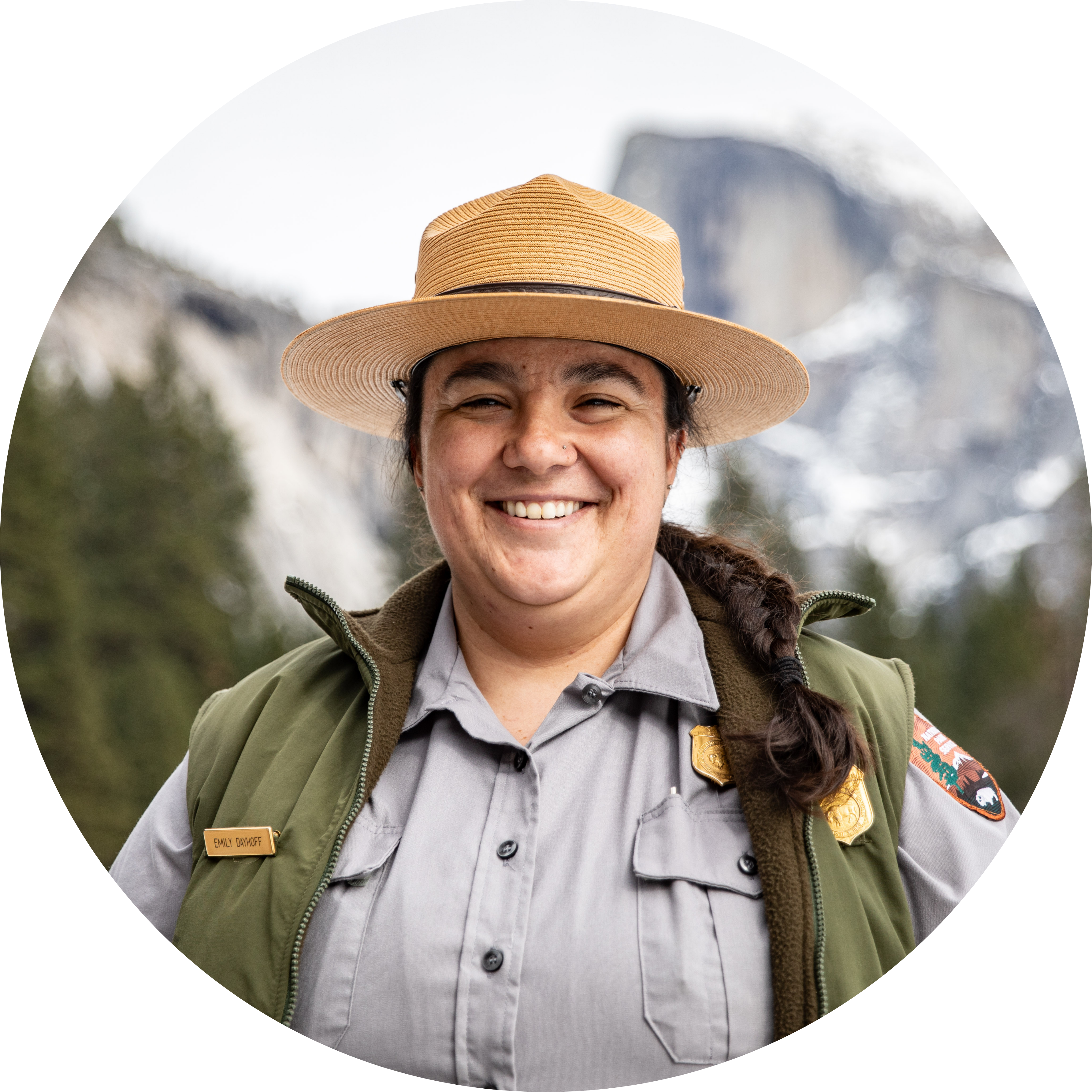
By Emily Dayhoff
Park Ranger and Cultural Demonstrator
Southern Sierra Miwuk and Chukchansi
We Are Still Here: Reconnecting With My Native Culture in Yosemite
Growing up in Mariposa, I always knew I was Native. But knowing and living my heritage were two very different things. My family didn’t actively practice in traditional ceremonies, so my connection to my culture was something I had to seek out on my own. That journey ultimately led me here, to Yosemite National Park, where I serve as an interpretive park ranger and a cultural demonstrator, sharing the rich history and traditions of my ancestors.
Bridging the Past and Present
My work at the park is both deeply personal and incredibly fulfilling. While I hold the title of park ranger, the heart of my job is cultural demonstration. Every day, I engage visitors in traditional and contemporary Native arts — from basket-weaving and cordage-making to beadwork that incorporates both ancestral materials and modern glass beads. People are often surprised to learn that glass beads, now associated with Native American artistry, were introduced through trade and weren’t always part of our traditions.
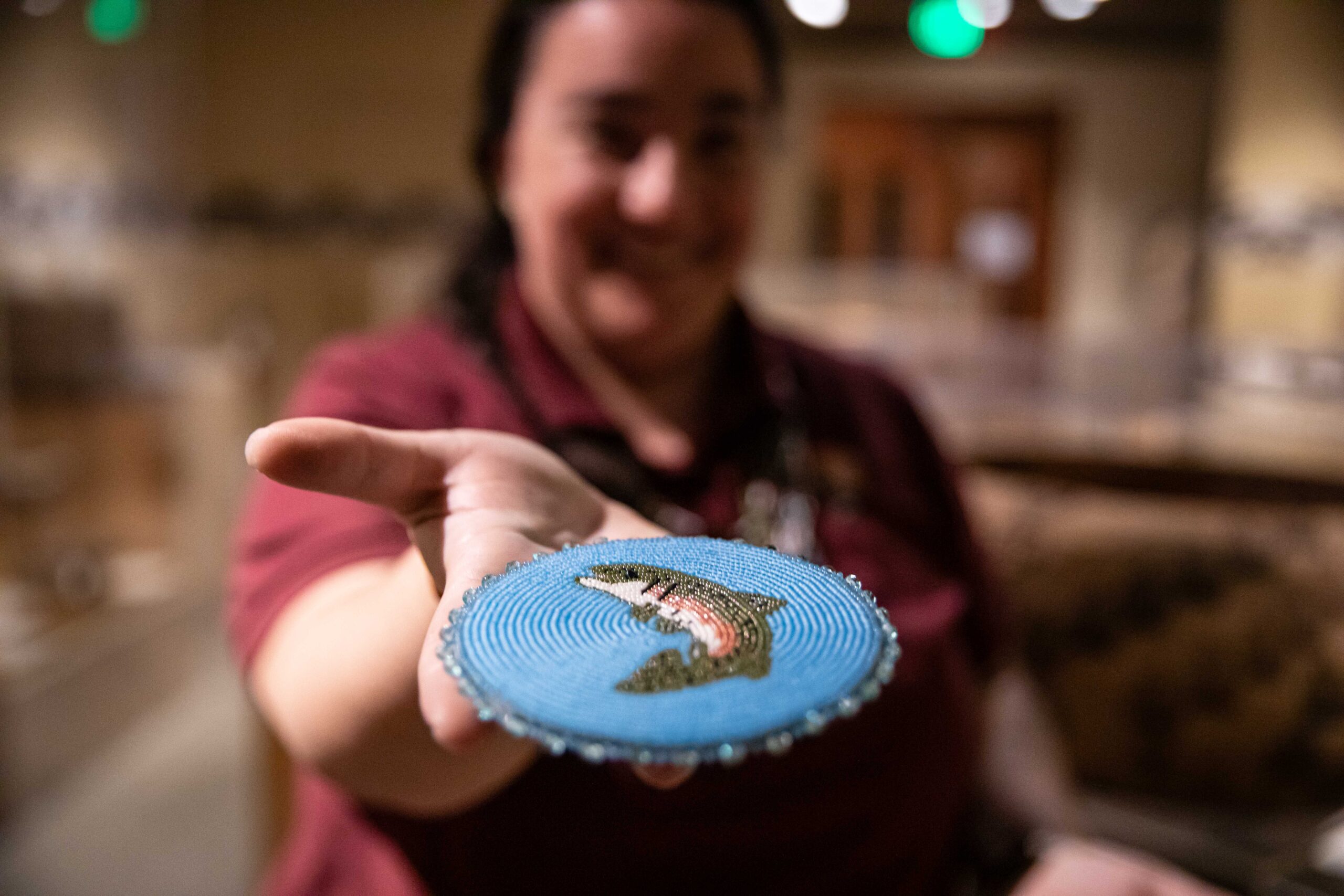
Emily Dayhoff holds a recently completed necklace medallion that she made during a demonstration in the Yosemite Museum. © Dakota Snider.
Beyond demonstrating crafts, I also work at the Welcome Center, provide interpretive programs on Native and natural history, and even guide the Valley Floor Tour — also known as the “Green Dragon.” It’s a two-hour tour where I get to share the stories of this land and its history, including stories that help visitors see Yosemite through the eyes of the Native people who have lived here for thousands of years.
Ironically, despite working in a place so tied to the outdoors, I joke that I’m a “park ranger allergic to the outside.” Allergies aside, my role gives me the opportunity to immerse myself in the land and history in a way few others experience. The land holds stories — ones I now have the privilege of telling.
Teaching Native History Outside the Classroom
My journey to this role wasn’t linear. I originally pursued a degree in history with the intention of becoming a teacher. But midway through my senior year, the requirements shifted, delaying my ability to enter a teaching program. Around the same time, I landed an internship at Yosemite, which was supposed to last only 12 weeks. That internship turned into something much greater: a realization that I could teach, just not in a traditional classroom.
Instead of textbooks, I use the park as my teaching tool, sharing Native history in a way that is honest, unfiltered, and deeply impactful. Here in Yosemite, I can share the stories that often go untold.
A common misconception I encounter in my work is the assumption that Native people no longer exist. People will walk into the museum and ask, “Are you a real Indian?” — as if we are relics of the past rather than living, breathing members of modern society. Some visitors even express guilt and offer apologies for historical injustices. While their intentions may be well-meaning, these moments highlight the deep misunderstandings surrounding Native history and contemporary Native identity.
Walking in the Footsteps of My Ancestors
One of the most profound experiences in reconnecting with my heritage was participating in the Trans-Sierra Walk — a traditional journey from Yosemite Valley to Mono Lake. The first year, I only made it as far as Tenaya Lake, but each summer I returned, completing the full route multiple times.In 2012, I was honored to carry the burden basket — a sacred item with deep ties to our creation stories. The experience was surreal, immersing me in the landscapes and traditions of my ancestors while deepening my understanding of my place within them.
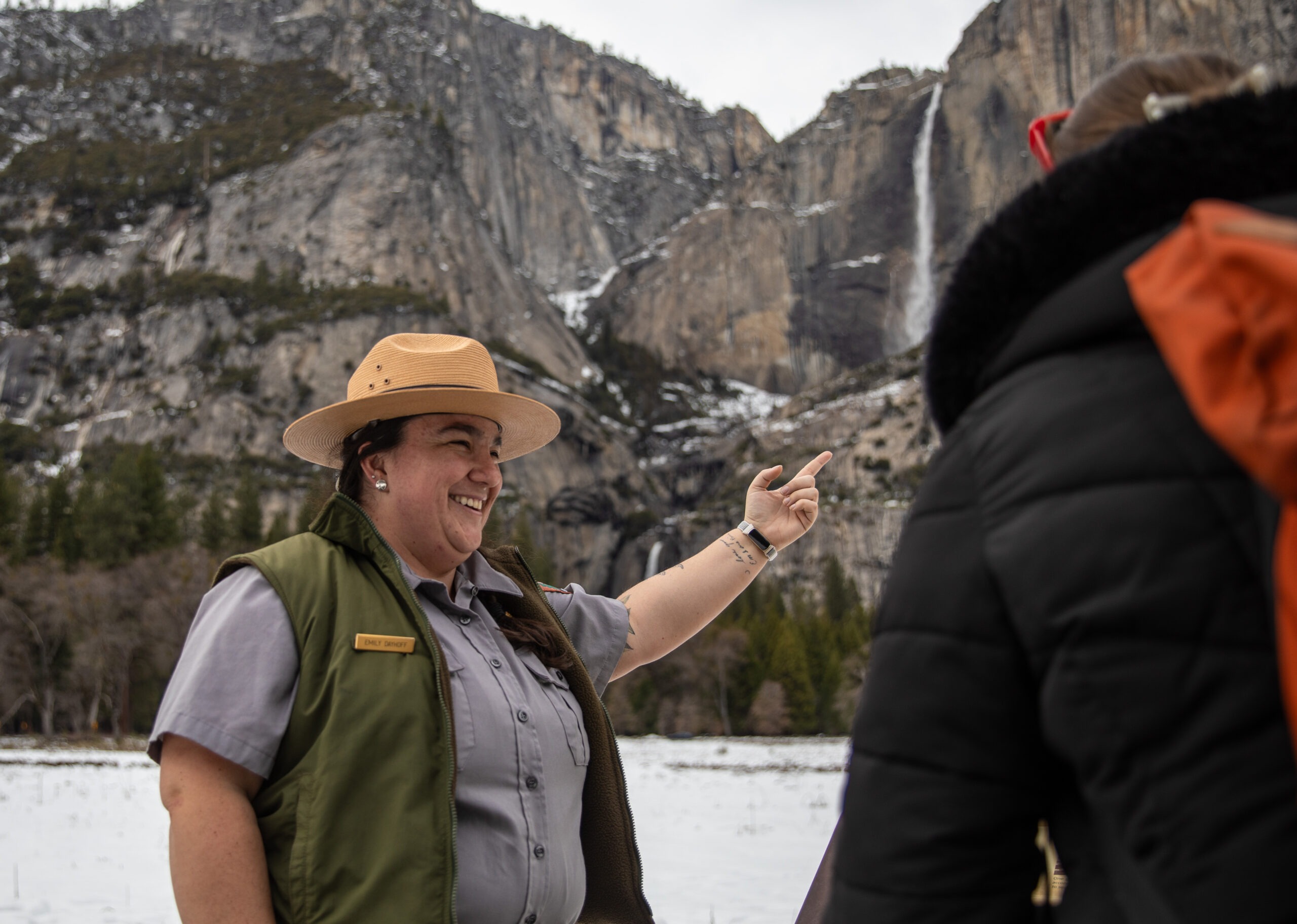
As an interpretive park ranger and cultural demonstrator at Yosemite National Park, Emily Dayhoff shares the rich history and traditions of her ancestors. © Dakota Snider.
My ties to Yosemite run deeper than my job. I can trace my roots in Yosemite to my great-great-great-great grandmother. My great-grandmother grew up in Wahhoga, an area that was long inhabited by Tribes before they were forced off the land. Here, she was raised by her grandmother, who was one of the last hereditary leaders of the Yosemite Native people.
Despite her deep roots, she rarely spoke about her past. When I once asked about her time in a boarding school, she simply said: “They washed my mouth out,” and the conversation ended there.
Now, as she lives with dementia, she exists in another time — one where she is still a young girl in Yosemite, laughing and sharing stories with her childhood friends.
At the core of my work is a simple yet crucial message: Native people are still here. We are not just a chapter in a history book or names on a plaque. We are business owners, educators, artists, and park rangers. My hope is that every visitor who crosses my path leaves with a greater understanding — not just of Yosemite’s Native past but of its Native present and future.
In 2025, Yosemite Conservancy donors are supporting the Yosemite Indian Cultural Program plans to bring cultural demonstrators from local California Tribes to interpret their own stories at the Yosemite Museum and Indian Village.
Click here to learn more about the demonstrations. AND, click here to learn more about Emily Dayhoff!
